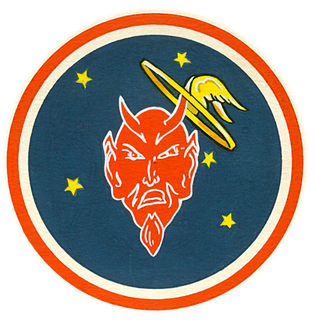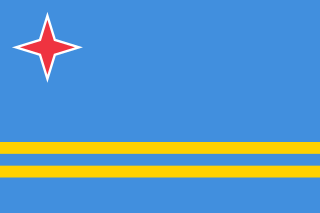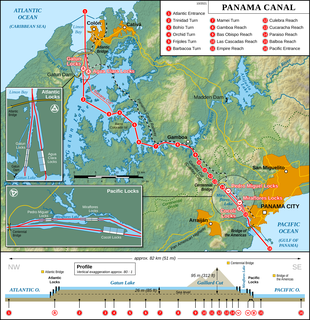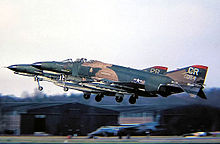
Erding Air Base is a German Air Force airfield near the town of Erding, about 45 kilometers (28 mi) northeast of central Munich in Bavaria. It is the home of the 5th Air Defense Missile Squadron and the 1st Air Force Maintenance Regiment.

Soesterberg Air Base was a Royal Netherlands Air Force military air base located in Soesterberg, 14 kilometres (8.7 mi) east-northeast of Utrecht. It was first established as an airfield in 1911, and in 1913, the Dutch Army bought the field and established the Army Aviation Division.

The 103d Airlift Wing is a unit of the Connecticut Air National Guard, stationed at Bradley Air National Guard Base at Bradley International Airport, Windsor Locks, Connecticut. If activated to federal service with the United States Air Force, the 103 AW is operationally-gained by the Air Mobility Command (AMC).

The 52d Fighter Wing is a wing of the United States Air Force stationed at Spangdahlem Air Base, Germany. It was activated in 1948, but derives significant elements of its history from the predecessor Second World War 52d Fighter Group, which is now the 52d Operations Group, subordinate to the wing.

The 65th Air Division is an inactive United States Air Force organization. Its last assignment was with United States Air Forces in Europe, assigned to Seventeenth Air Force, being stationed at Lindsey Air Station, Germany. It was inactivated on 30 June 1991.

The 22d Fighter Squadron is an inactive United States Air Force unit. It was last assigned to the 52d Operations Group and stationed at Spangdahlem Air Base, Germany. It was inactivated on 13 August 2010. At various times during its existence, the squadron has gone by colloquial names "Stingers", "Adlers", "Bees", "Bumblebees" and "The BIG 22: Last of the Red Hot Fighter Squadrons".

The 23d Fighter Squadron is an inactive United States Air Force unit. It was last assigned to the 52d Operations Group and stationed at Spangdahlem Air Base, Germany. It was inactivated on 13 August 2010.

The 53d Fighter Squadron is an inactive United States Air Force unit. It was last assigned to the 52d Operations Group and stationed at Spangdahlem Air Base, Germany. It was inactivated on 31 March 1999.

The 54th Fighter Squadron is an inactive United States Air Force unit. Its last assignment was to the 3d Operations Group, being stationed at Elmendorf Air Force Base, Alaska. It was inactivated on 28 April 2000.

The 55th Fighter Squadron is part of the 20th Fighter Wing at Shaw Air Force Base, South Carolina. It operates the General Dynamics F-16 Fighting Falcon aircraft conducting air superiority missions.

The 31st Tactical Training Squadron is an inactive United States Air Force unit. Its last assignment was with 31st Tactical Training Wing at Homestead Air Force Base, Florida, where it was inactivated on 9 May 1988.

The 59th Test and Evaluation Squadron is a United States Air Force unit. It is assigned to the Air Combat Command 53d Wing, 53d Test Management Group at Nellis Air Force Base, Nevada.

The 431st Test and Evaluation Squadron is an inactive United States Air Force unit. Its last assignment was with the Tactical Air Command 57th Fighter Wing stationed at Nellis AFB, Nevada. It was inactivated on 30 June 1992.

The 512th Fighter Squadron is an inactive United States Air Force unit. Its last assignment was with the 86th Fighter-Interceptor Wing, based at Ramstein Air Base, Germany. It was inactivated September 1994.

The 92d Cyberspace Operations Squadron is a United States Air Force unit.

The 11th Fighter-Interceptor Squadron is an inactive United States Air Force unit. Its last assignment was with the 343d Fighter Group at Duluth Airport, Minnesota, where it was inactivated on 30 June 1968.

The 33d Operations Group is the flying component of the 33d Fighter Wing, assigned to Air Education and Training Command of the United States Air Force. The group is stationed at Eglin Air Force Base, Florida.

The 36th Operations Group is the operational component of the 36th Wing, assigned to the United States Air Force Pacific Air Forces. The group is stationed at Andersen Air Force Base, Guam.

The 33d Special Operations Squadron is a United States Air Force unit, assigned to the 27th Special Operations Group, Cannon Air Force Base, New Mexico. The squadron operates the General Atomics MQ-9 Reaper.

The 32d Air Expeditionary Group is a provisional unit of the United States Air Force (USAF). It is assigned to United States Air Forces in Europe (USAFE) to activate or inactivate at any time. It was last active as the 32d Air And Space Operations Center in December 2006 at Ramstein Air Base, Germany.









































